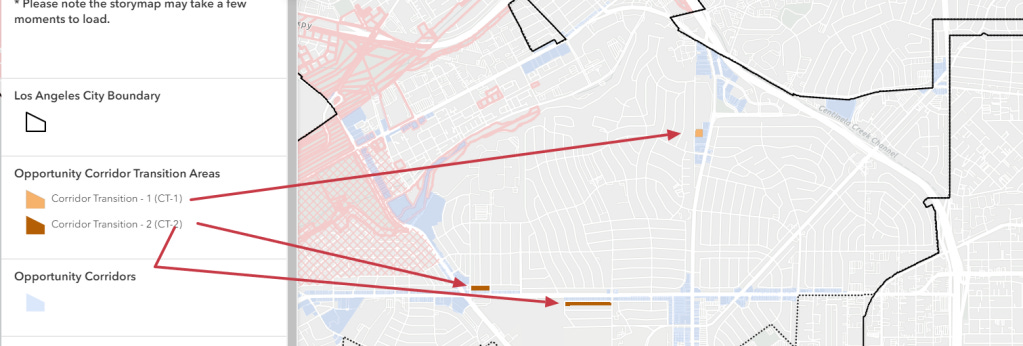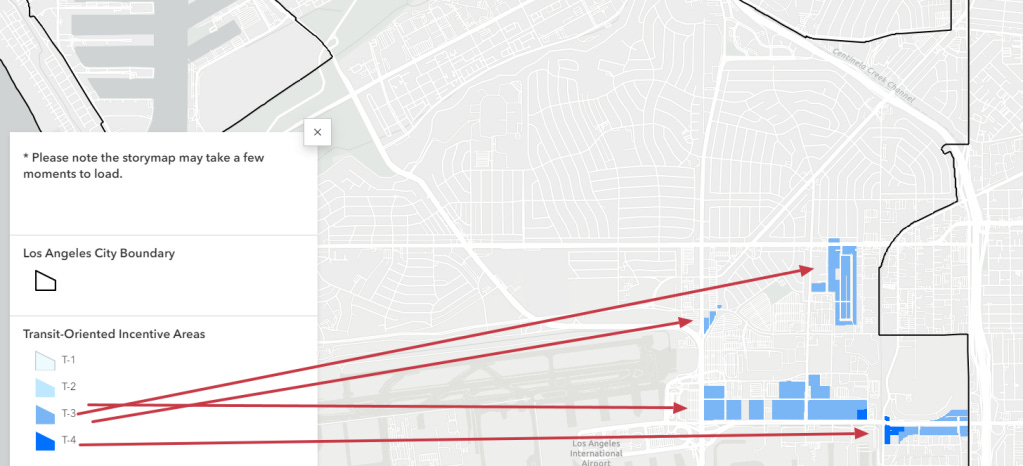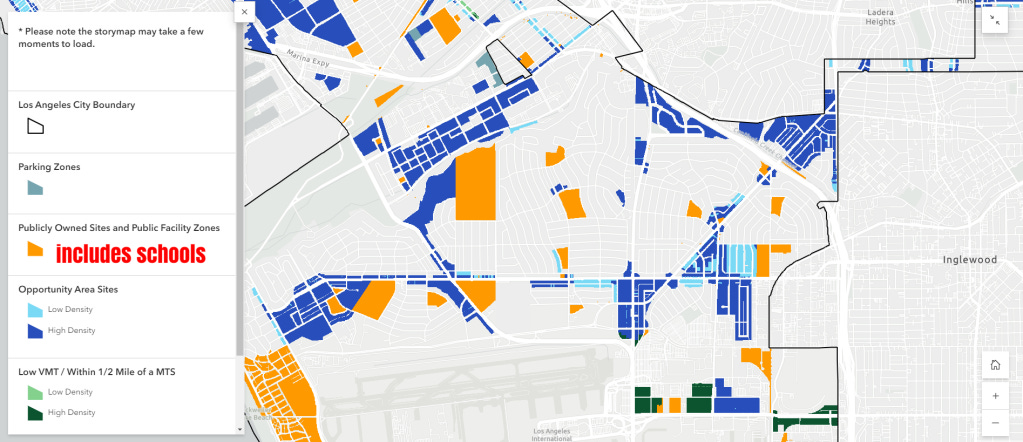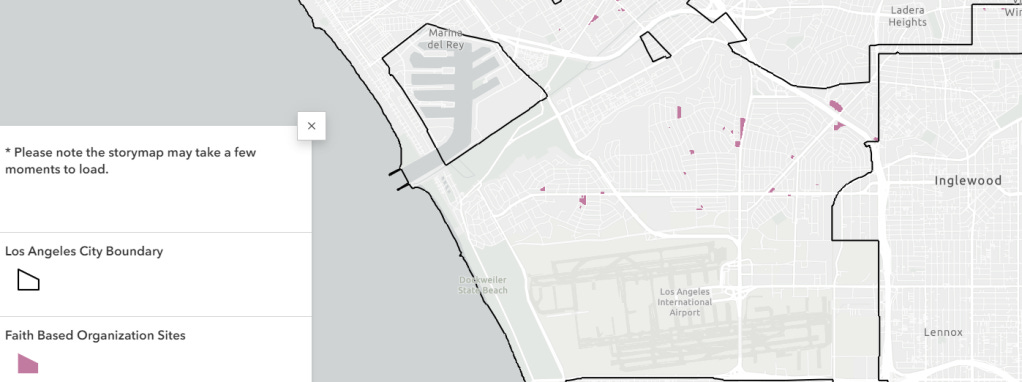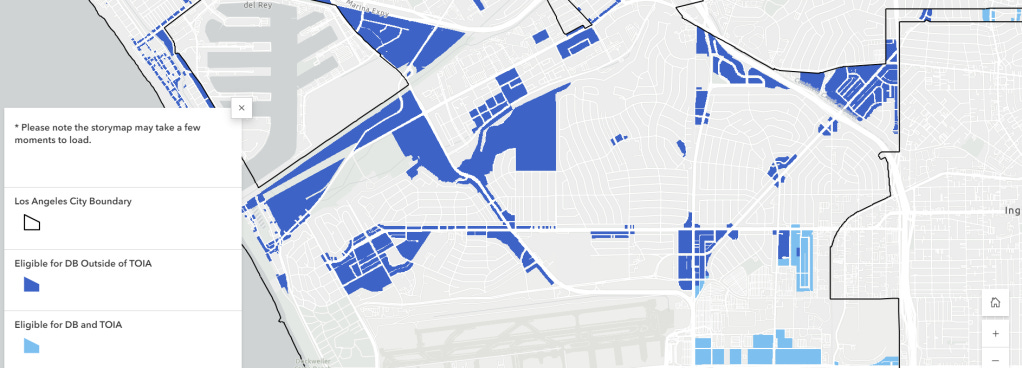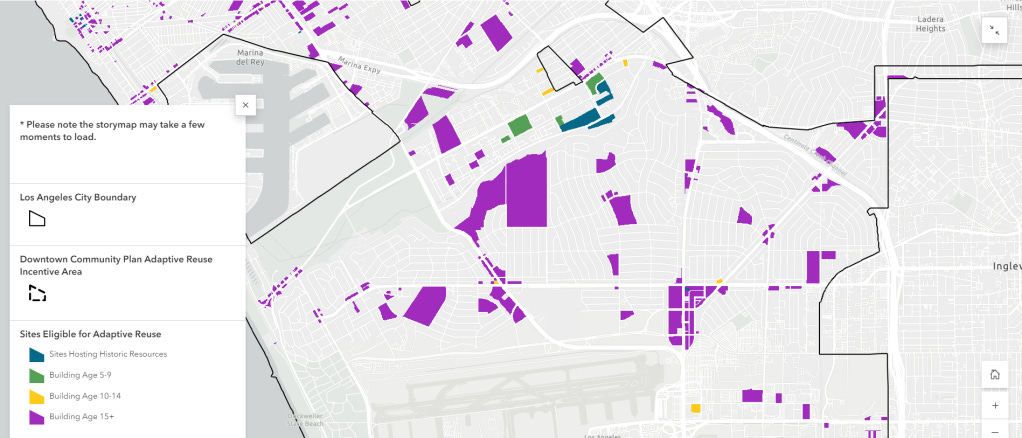The Housing Element - Your Cliff Notes Version
This post originally appeared on ConcernedForWestchesterPlaya.com
Buckle up! Long read ahead. 🙂
How We Got Here
For almost a year we've been in an uproar in our community over our Community Plan Update ("CPU"). For those of us who have lived in our community for a long time, we readily recognized that this CPU was unlike any other in the past.
The update process started out normal enough in 2017, with lots of community engagement opportunities and a 1st draft that raised eyebrows with what felt at the time like extensive upzoning along Manchester. We would later learn just how bad the city wanted to upzone our plan area.
This photo below is still on the planning website, pretending to depict the process. This photo is more like 2018 when I attended multiple events that looked just like this one. This photo is the opposite of how the 2nd draft went down. And the 3rd draft didn't come from outreach like this, either.
After the 1st draft came the pandemic. Everything everywhere shut down. Little did we know what Sacramento was up to while we were all busy navigating our new normal.
And then came the shenanigans with the secret Advisory Group and Draft #2 with its crazy proposed upzoning. We were outraged.
We organized and we were heard. We held a huge community meeting, we wrote our councilperson and we rallied our Neighborhood Council. We were very clear - Westchester Playa took a large number of units in the previous housing cycle, and we couldn't take any more with our single-family home infrastructure and heavy traffic demands on our gateway boulevards to LAX.
The 3rd draft of the CPU dropped last month and it looks like we were heard. All the yellow in the map below is a full reversal of the single-family upzoning we fought so hard to prevent, but the pinks and the oranges and the blues and the maroons are still a problem (hint - the dark pinks are the worst). Navigate the interactive map here with the color explanations.
But Wait! There's More
But while we fixated on CPU-gate, a whole other density scheme was progressing in tandem that we barely looked at - the Housing Element and its enabling ordinances.
You can read more about the Housing Element background here, but I'll summarize the cliff notes for you:
Los Angeles is a charter city (125 of 478 cities in CA are charter cities)
LA's General Plan is composed of 11 different elements, including the Housing Element
LA's 35 Community Plans make up the Land Use Element of the General Plan
The Housing Element must comply with specific standards and requirements set by the State and must be updated every eight years
We are currently in the midst of our 2021-2029 Housing Element cycle
The State certified LA's 2021-2029 Housing Element in 2022
LA's Housing Element is 377 pages (find an index here) and is called the "Plan To House LA"
So what we have is the Housing Element proceeding on one track and the CPUs proceeding on another (the Land Use Element track). Together they constitute LA's Housing Element Rezoning Program.
The CPUs are rezoning parcels (read "upzoning") and the Housing Element's Citywide Housing Incentive Program (CHIP) lays out the builder incentives ("developer giveaways"). (fact sheet) (draft ordinance - 85 freaking pages). CHIP, along with three other ordinances constitute the "Housing Element."
While we've been focused on the upzoning, the giveaways have been progressing without us watching. And we've missed a lot! 6 core progressive strategies in 4 hefty ordinances:
Adaptive Reuse (remove process barriers and streamline conversion)
Affordable Housing Overlay (provide tailored land use incentives for affordable housing developments in high resource areas and incentivize affordable housing on faith based owned properties, parking lots and publicly owned sites)
Update to Affordable Housing Incentive Programs (local Density Bonus and Transit Oriented Communities (TOC) programs will be amended and expanded to provide tailored affordability, reflect recent updates to state law, and serve as the overall incentive based framework for the program)
Missing Middle (remove limitations to facilitate construction of low scale/low rise housing) (focused in higher opportunity areas and areas near transit)
Opportunity Corridors (increase housing capacity on major corridors, particularly those with transit access)
Process Streamlining (remove procedural barriers and create efficient and expedited processes for projects with an affordable housing component)
the 4 ordinances (expected adoption is Fall 2024)
CHIP Ordinance → (1) State DB Law, (2) Mixed Income Incentive Program (opportunity corridors and missing middle and TOC defined by housing opportunity maps) and (3) affordable housing incentive program
Citywide Adaptive Reuse Ordinance (fact sheet) → expands current ordinance
Housing Element Sites Ordinance (fact sheet) → this is related to an Inventory of Adequate Sites and minimum densities
Resident Protections Ordinance (fact sheet) → renter protections
A Special Side Note About CHIP
As we studied and learned about the upzoning that came with our CPU, we learned about RHNA numbers and the State's directive that LA rezone to allow almost half a million new units, notwithstanding the great outward migration we're experiencing in our City and our State.
What I haven't seen is any mandate that we provide all these builder giveaways. I could be wrong, but I follow these developments quite closely. This is a new question in my mind and I'll be doing more research. Do let me know in the comments if you're aware of a mandate. There have been so many gross giveaways by our legislature, I could surely have missed a few.
If there is no mandate, I have to say that CHIP is just too aggressive. We don't need more market rate units. Full stop.
Why do we need the Density Bonus? I understand there is a state law, but I think I'm reading that the City is expanding even that?
And why do we need the Transit Corridor bonuses? I say, go with the AHIP (affordable incentives) and be done.
We need more affordable units. Forget the rest of the giveaways with their token affordable units and net loss affordable units.
I'm not even in favor of the FBO program with 80% affordable units. Churches are in single-family communities. Those communities don't want high rises. Has Planning not been listening??
Share your thoughts on CHIP at the bottom of this page on the City's website. I have. 😁
Timeline
The process seems to be delayed, so I believe we might still have time to catch up. It's Spring and I haven't heard anything about Environmental Review for CHIP or the Housing Element. Please drop a comment if you know differently.
The CHIP Maps Drop
CHIP is the builder incentive program, which I not so fondly call the giveaways. Some of the giveaways are specifically geared toward affordable housing. I support more affordable housing, but pay close attention to how many extra market rate units (which we don't need) are in the project, plus how many truly affordable units are destroyed on the process ("net loss" of affordable units).
For example, a project might tear down four truly affordable units to build 10 market rate units and two affordable units (defining "affordability" in a not so affordable way). This is a net loss of affordable units and a tragedy for our city.
With this lens in mind, below are excerpts of the maps for our plan area. You can try navigating the city's explorer maps here, but they don't make it easy.
CHIP's Opportunity Corridors
Please note, the arrows are examples only and not meant to provide an opinion on the highlighted parcels. Sites located along the Opportunity Corridors would be eligible for development bonuses in exchange for set-aside affordable units. Development incentives have been tailored according to the type of Opportunity Corridor and type of transit proximity, with scaled development incentives as projects are farther from high-quality transit. Generally, sites would be eligible for scaled FAR and Height (up to 5 or 8 stories) based on proximity to transit. They are so casual about 8 stories!
CHIP's Corridor Transitions
The Opportunity Corridor Transition Incentive Area proposes to remove limitations on development to facilitate the construction of various types of “low-scale” (“low-rise”) housing, such as bungalow courts, townhomes, and courtyard apartments that were commonly built before the 1950’s, to fill the gap in housing options between lower-scale residential neighborhoods and mid-rise apartments.
CHIP's Transit-Oriented Incentive
The Transit-Oriented Incentive Area (TOIA), according the city's website, provides opportunities citywide for the construction of affordable housing through tiered development incentives for projects within one-half mile of a high quality bus stop or major transit stop, increases housing options for residents of all income levels, and promotes access to public transportation. This program proposes to codify key elements of the Transit Oriented Communities (TOC) Affordable Housing Incentive Guidelines for sites near transit citywide.
It's hard to read this map, but the indicated parcels are along Century Blvd. and the Reading/Ramsgate area. No other TOIAs appear in our plan area.
CHIP's 100% Affordable Housing Incentive Program
AHIP will streamline procedures and offer land use incentives scaled at higher and lower density contexts for 100% Affordable Housing Projects citywide. For example, if a site is zoned for lower density (i.e. less than 5 units) it will qualify for lower incentives (like height or FAR) than a site zoned for a higher density scale. Sites eligible for 100% Affordable Housing project incentives are found in Low Vehicle Mile Traveled (VMT) sites, and in Opportunity Area Sites (i.e. Moderate, High and Highest Resource areas as defined by the TCAC/HCD Opportunity Maps). Incentives are also designed to be greater in high and moderate resource areas for the purposes of Affirmatively Furthering Fair Housing and equitably distributing affordable housing development.
Additionally, the ordinance will expand the types of zones eligible for 100% Affordable Housing projects to “P” Parking zones and “PF” Public Facilities zones, and to parcels owned by public agencies. 100% Affordable Housing projects in P or PF zones will qualify for tailored incentives where projects may apply the least restrictive zoning regulation of their adjoining parcels.
Note the yellow parcels below are publicly-owned properties, such as public schools. We all assume they will continue to be schools, but with declining enrollment, this could be one way the city sneaks a bunch of high rises into our single-family low rise communities. The planning website specifically calls these parcels "citywide parcels eligible for AHIP incentives."
This particular Incentive Plan will crush Lincoln Blvd., SE Westchester and NE Westchester up into Ladera.
Hello, LAX? Are you there?
CHIP's Faith-Based Housing
AHIP adheres to the minimums of state law for Faith Based Organizations ("FBO") tailored incentives and extends eligibility to projects that provide at least 80% affordable housing projects on sites owned by Faith Based institutions. The program’s Faith Based Organization Sites incentives build on the state’s Senate Bill 4 and include provisions created from stakeholder feedback that are intended to make FBO projects more feasible.
That paragraph above is mostly taken from the City's website. I read "stakeholders" to mean developers because I'm highly skeptical there is a large group of everyday citizens who understand this faith-based development idea.
CHIP's State Density Bonus Program
State Density Bonus Law (California Government Code Sections 65915-65918) mandates local jurisdictions to offer density bonuses, parking reductions, and other incentives in exchange for the provision of restricted affordable housing units in multifamily residential developments.
The map shows parcels currently eligible to take advantage of the State Density Bonus Program. As part of the Mixed Income Incentive Program, the City is also proposing the Transit Oriented Incentive Area Program, and many of the same parcels that are eligible for State Density Bonus incentives are also eligible for incentives available through the Transit Oriented Incentive Areas.
As with the Affordable Housing Incentive Program, Lincoln Blvd., SE Westchester and NE Westchester up into Ladera will get crushed. Remember, "reduced parking." 😱
Adaptive Reuse Housing Incentive Program
The proposed Adaptive Reuse Ordinance will expand the existing incentives to encourage converting underutilized buildings into new housing. Currently, only buildings constructed before July 1, 1974 are eligible. This updated ordinance establishes a faster approval process for the conversion of existing buildings and structures that are at least 15 years old to housing and expands adaptive reuse incentives citywide.
Presumably we are already used to traffic and density associated with commercial buildings and reuse is good for the planet, but I'm told by experts that the practicalities of repurposing commercial properties will probably not pencil out for housing developers, so I'm calling this one the "wink and a yawn" initiative.
Are We Done Yet?
This is a lot, right? We're supposed to be rezoning for only 255K units across the entire city to meet the outsized RHNA mandate, and it feels like our little ole plan area (one of 35!) is taking the whole burden between the zoning changes and the builder giveaways. The housing progressives are out of control and poised to blight our communities for generations to come. Don't forget, these incentives will be taken up one at a time and represent huge oversized projects rising up like a middle finger to the rest of the community.
Concerned Neighbors wants to hear from you! What priorities should we be pushing regarding the Housing Element and CHIP? If the city doesn't hear from us, that gives them room to default to their developer "stakeholders." Those aren't the stakeholders who have to live with this mess. Send us your comments below and we'll be formulating our recommendations soon.
Tell Us What You Think About The Housing Element In The Comments
Tracy is active in a number of local community organizations including the Neighborhood Council PLUC, Neighborhood Council Ad Hoc CPU Committee, Kentwood Home Guardians and Emerson Ave Community Garden Club. The views expressed in this post are Tracy’s alone, and should not be construed in any way as an opinion of any other group. Are you planning a meeting with the planners? Have Tracy along to make sure you get the same information other community members get. Are you willing to host a group of your neighbors for a talk? Tracy would be happy to join you.






